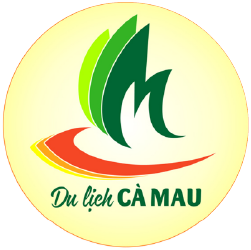Since May 18th 2012, the Ministry of Health, Labour and Welfare of Japan has tested Ethoxyquin residue -an anti-oxidant substance popularly used in preserving food as apples, chilies, fruits, animal feed and aquatic feed, on 30 percent of shrimp consignments originated from Vietnam with maximum residue limits (MRLs) of 0.01 ppm.
According to VASEP, the limit is unfair to Vietnam shrimp. MRL for Ethoxyquin in EU and the U.S. is 150 ppm and Japan is also 150 ppm applied with fishmeal. Other shrimp suppliers to Japan such as Thailand or India must not undergo Ethoxyquin testing. The Ethoxyquin testing creates more burdens on both Vietnam exporters and Japanese importers.
During June 18th – 23rd 2012, a delegation led by Mr. Nguyen Nhu Tiep – Director of National Agro-Forestry-Fisheries Quality Assurance Department (NAFIQAD) had a visit to Japan to work with with competent Japanese agencies on Ethoxyquin. The trip focused on seeking a solution for barriers of food safety imposed by Japan on Vietnam shrimp exported to the country.
The Vietnam side requested Japanese agencies to adjust regulations on MRLs for Ethoxyquin residues on seafood products on the basis of evaluation on risks related to food safety and drew out a roadmap for Vietnam shrimp sector to solve problems related to Ethoxyquin.
While awaiting the conclusion from Japan, Vietnam enterprises continued to strengthen control of Ethoxyquin in shrimp consignments exported to Japan to comply with Japan’s restriction. In June 13th 2012, MARD asked Directorate of Fisheries (D-Fish) to review and make a list of aquatic feed containing Ethoxyquin (both domestic and imported products) as well as propose and submit MRLs for Ethoxyquin residues in aquatic feed. D-Fish must plan measures of controlling Ethoxyquin’s usage in aquatic feed production and recommend shrimp farms to stop using aquatic feed containing Ethoxyquin.
MARD directed NAFIQAD to popularize and guide seafood processors to control Ethoxyquin to meet importing market’s regulations. In June 15th 2012, D-Fish issued documents to direct Sub-Departments of Aquaculture to notify Japan’s alerts to local aquatic feed producers. D-Fish asked feed producers to commit not to use Ethoxyquin in aquatic feed producing. Sub-Departments of
Aquaculture must inspect local feed producers and report D-Fish feed products containing Ethoxyquin to remove them from list of feed products legally used. Sub-Departments of Aquaculture also guide farmers to stop feeding shrimp one day before harvesting in order to reduce the residue in shrimp.
Japan’s Ethoxyquin test will negatively affect to Vietnam shrimp exports and increase enterprises’ producing costs, even Japanese shrimp importers have to spend a lot of time and money for the Ethoxyquin testing in their country. Vietnam shrimp is losing its competitiveness in Japan market.
In 2012, shrimp exports is expected to reach US$2.5 billion USD. In the first 5 months this year, shrimp exports touched US$798.07 million, up 4.9 percent from that of the same period of 2011. Shrimp exports has reported a slow and sluggish growth.
In the wake of financial crisis in the U.S., EU, Japan has been becoming the largest importer of Vietnam shrimp. Japan’s regulation on Ethoxyquin residue on Vietnam shrimp makes Vietnam shrimp exporters confused because they find it hard to control MRL for Ethoxyquin residue in shrimp. Vietnam exporters are waiting for the result of the business trip of MARD representative and they hope that MRL for Ethoxyquin residue in Vietnam shrimp exported to Japan will be raised from 0.01 ppm (10 ppb) up to 100 ppb.
